2013 Mitsubishi Lancer Evolution Mr 0 60
The 2013 Mitsubishi Lancer Evolution GSR is a All-wheel drive Sedan. It can accommodate up to 5 passengers. It has 4 Doors and is powered by a 2.0L L4 turbo DOHC 16-valve engine which outputs 291 hp @ 6500 rpm and is paired with 5 speed manual transmission gearbox. The 2013 Mitsubishi Lancer Evolution GSR has cargo capacity of 195 Liters and the vehicle weighs 1595 kg. In terms of ride assists, the 2013 Mitsubishi Lancer Evolution GSR has stability control and traction control in addition to anti-lock brake system (ABS). The vehicle has an optional engine as well It offers and. Safety features also include Driver side front airbag and Passenger side front airbag. The front suspension is Front independent suspension while the rear suspension is Rear independent suspension. The car also features a Yes It has 18'' alloy wheels as standard. Electronic features include Cruise Control. For convenience, the car has Power windows and Power door locks. There is also a remote keyless entry feature. Moreover, the car has. The steering wheel has audio control buttons. In terms of performance, the car has 318 N.m of torque and a top speed of 243 km/h. The 2013 Mitsubishi Lancer Evolution GSR accelerates from zero to 60 mph in 5.1 seconds and hits quarter mile at 11.7 seconds. Fuel consumption is 12.5 L/100km in the city and 8.7 L/100km in the highway. The car price starts at $ 41,998
Mitsubishi Lancer 2013 1.6 CVT 0-100 KM
2013 Mitsubishi Lancer Acceleration 0-155km/h, CVT
2013 Mitsubishi Lancer Used Price Estimates
Estimates based on a driving average of 12,000 miles per year
| Used Condition | Trade In Price | Private Party Price | Dealer Retail Price |
|---|---|---|---|
| Outstanding | $ 5,222 | $ 7,210 | $ 8,966 |
| Clean | $ 4,915 | $ 6,794 | $ 8,418 |
| Average | $ 4,302 | $ 5,962 | $ 7,322 |
| Rough | $ 3,689 | $ 5,131 | $ 6,227 |
The 2013 Mitsubishi Lancer is a small sedan available in DE, ES, SE, GT and Ralliart trim levels (the high-performance Lancer Evolution is reviewed separately).
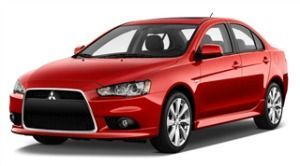
The base DE comes with 16-inch steel wheels, automatic headlights, a tilt-only steering wheel, full power accessories, a trip computer and a four-speaker sound system with a CD player. The ES adds chrome exterior accents, air-conditioning, cruise control, keyless entry, upgraded cloth upholstery, a 60/40-split rear seat, front and rear center armrests, a height-adjustable driver seat, steering-wheel audio controls and an auxiliary audio jack. The Alloy Wheel package adds 16-inch alloy wheels to the ES trim along with rear disc brakes (instead of drums) and a rear stabilizer bar.

The SE trim gains a more powerful engine, all-wheel drive, special roof rack mounts and the Alloy Wheel package. The GT is similar to the SE, but is front-wheel-drive only and adds 18-inch alloy wheels, foglights, a sporty front fascia, a rear spoiler, keyless ignition/entry, automatic climate control, upgraded sport upholstery, a leather-wrapped steering wheel and shift knob, shift paddles (with the CVT), an auto-dimming rearview mirror, a rearview camera, the Fuse voice-activated electronics interface, a color driver information display, Bluetooth and a six-speaker sound system with a USB jack.
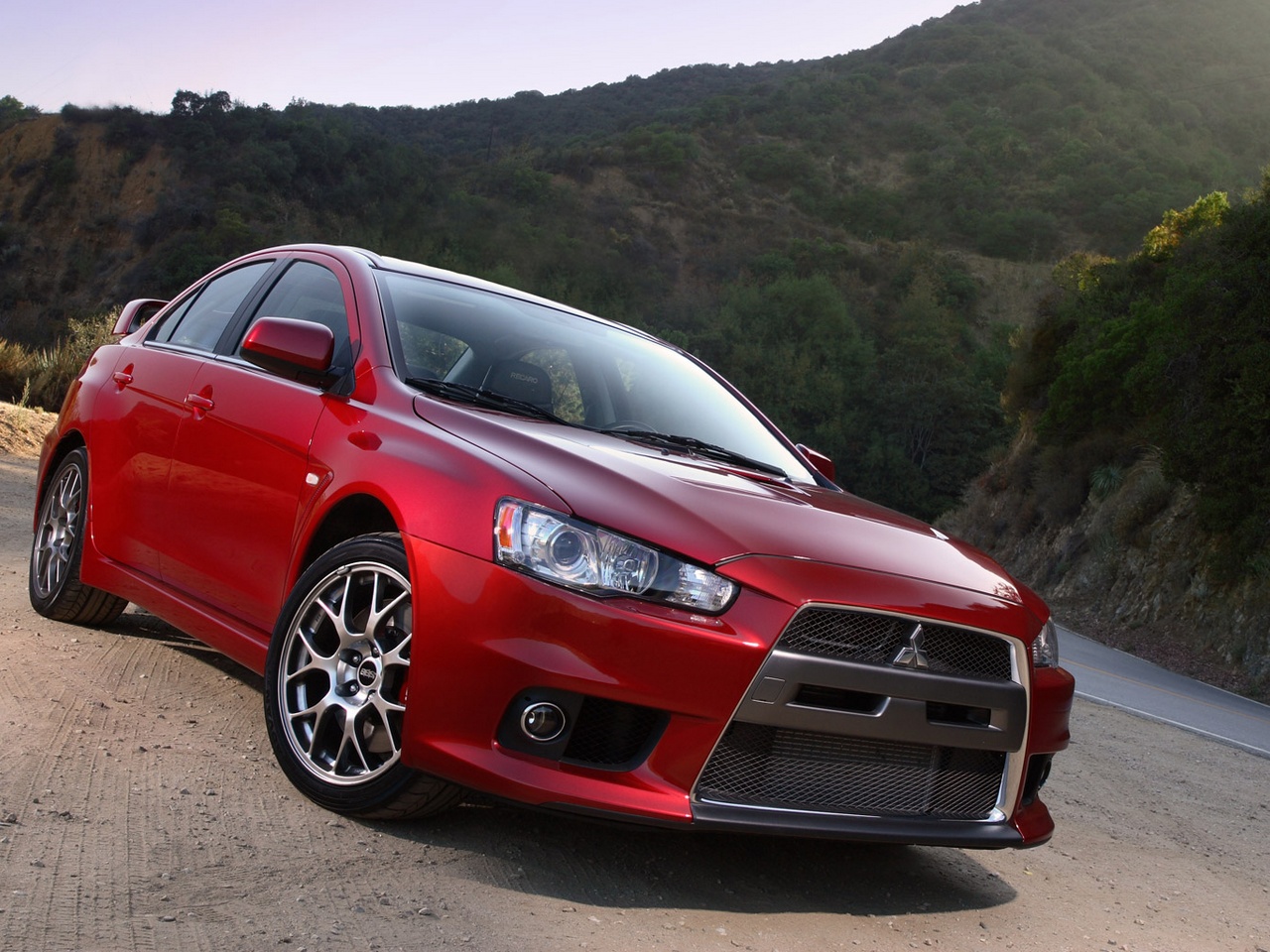
The all-wheel-drive Ralliart ups the performance ante with a turbocharged engine, an automated dual-clutch manual transmission (with shift paddles), hill-start assist, additional sport exterior treatments, a sport-tuned suspension, a sport steering wheel, unique upholstery, aluminum pedals and satellite radio.
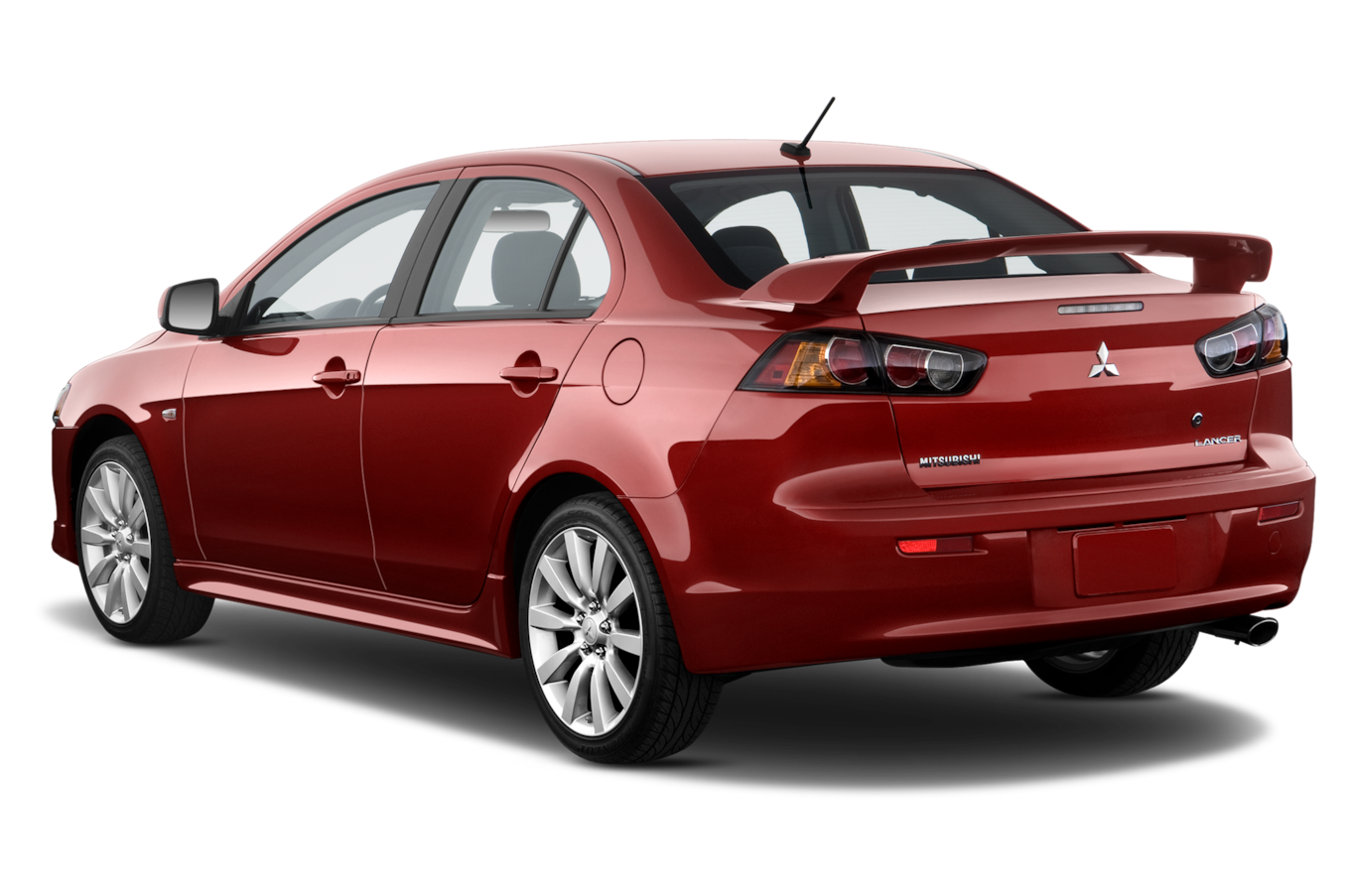
Many features of the upper trims are also available on the lower trims via options or packages. There are also several appearance packages for the DE and ES that add sporty enhancements such as a front airdam, rear spoiler and chrome exhaust outlet. An optional Premium package for the SE adds a sunroof, a nine-speaker Rockford Fosgate audio system (with satellite radio and a six-CD changer), leather-wrapped steering wheel/shift knob, a color display screen and upgraded door trim.
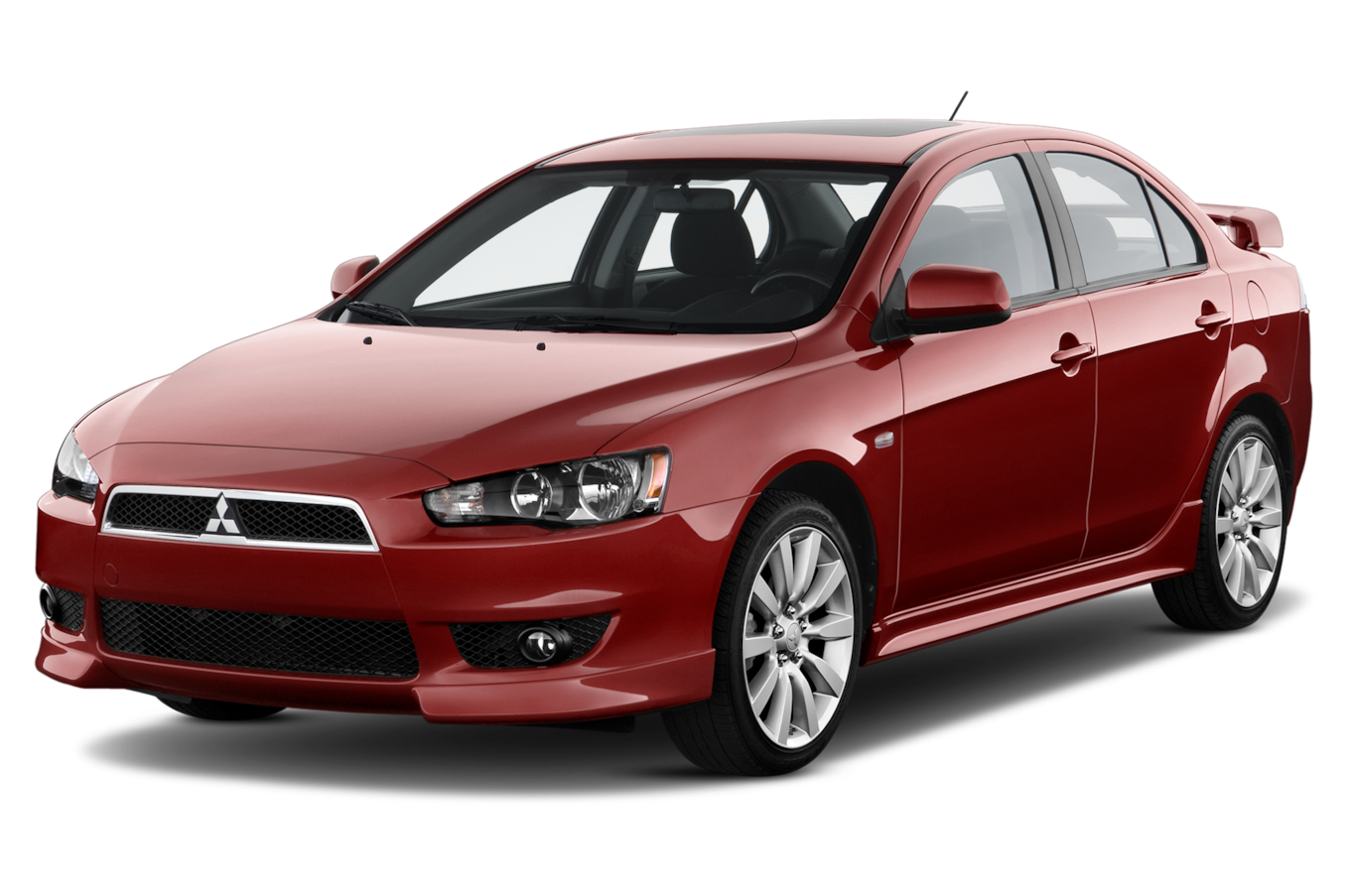
An available Touring package for GT and Ralliart trims features xenon headlights, the sunroof, a smaller rear spoiler, rain-sensing wipers, leather seats and the Rockford Fosgate sound system. Also optional on GT and Ralliart trims is a navigation system that features a 40GB hard drive capable of storing digital music files and a larger rearview camera monitor relocated to the touchscreen display (versus the rearview mirror).
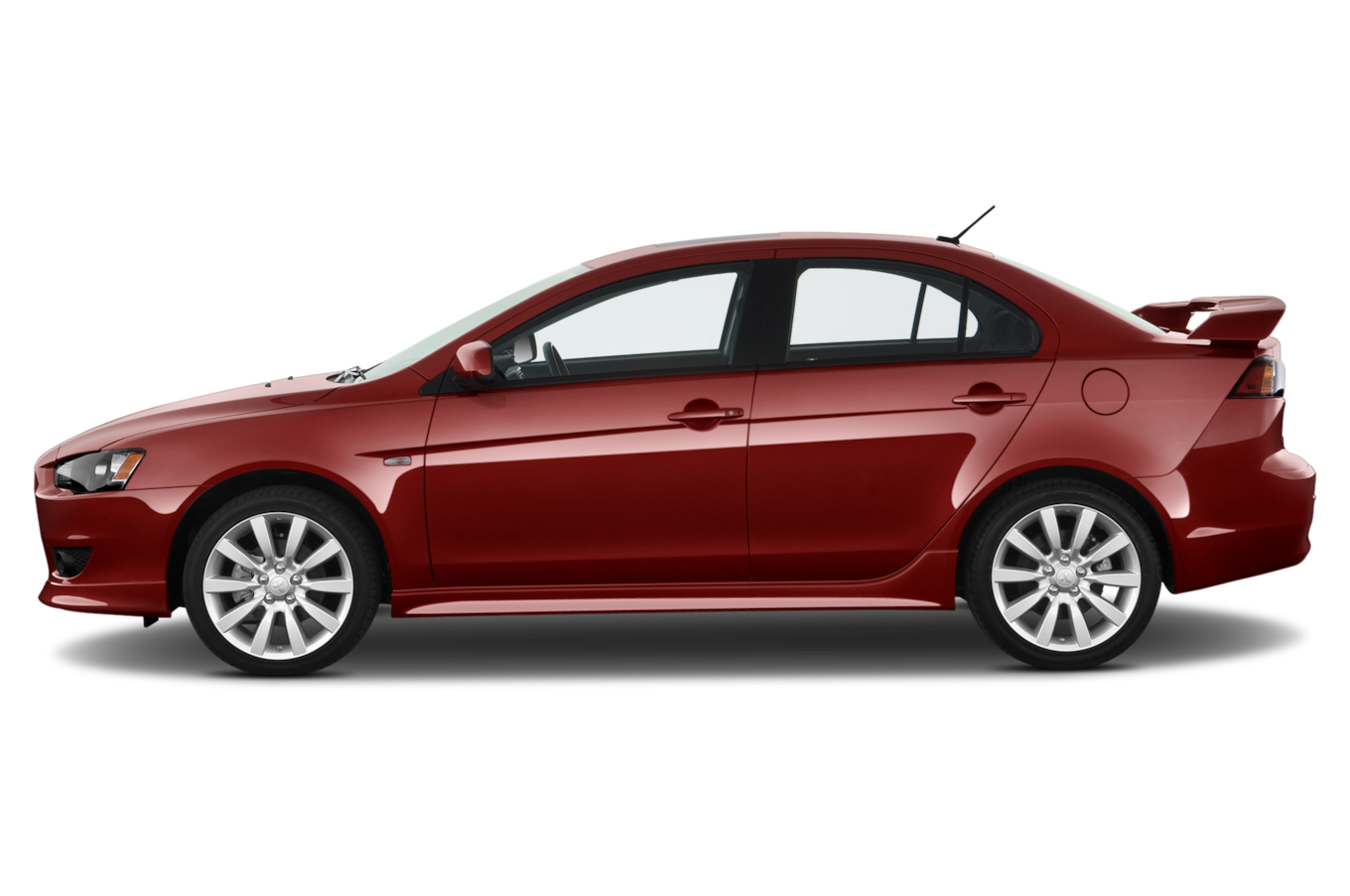
The 2013 Mitsubishi Lancer DE and ES are powered by a 2.0-liter four-cylinder engine that produces 148 horsepower and 145 pound-feet of torque. A five-speed manual transmission is standard, while a continuously variable transmission (CVT) is optional. In performance testing, the base engine coupled to the five-speed delivered a time of 8.8 seconds to 60 mph, which is a bit slow for the class. The CVT ran that dash in 9.1 seconds, which is average among automatic-equipped cars. In terms of fuel economy, the 2.0-liter achieves an EPA-estimated 26 mpg city/34 mpg highway and 29 mpg combined with the automatic transmission, an average rating for this class of car.
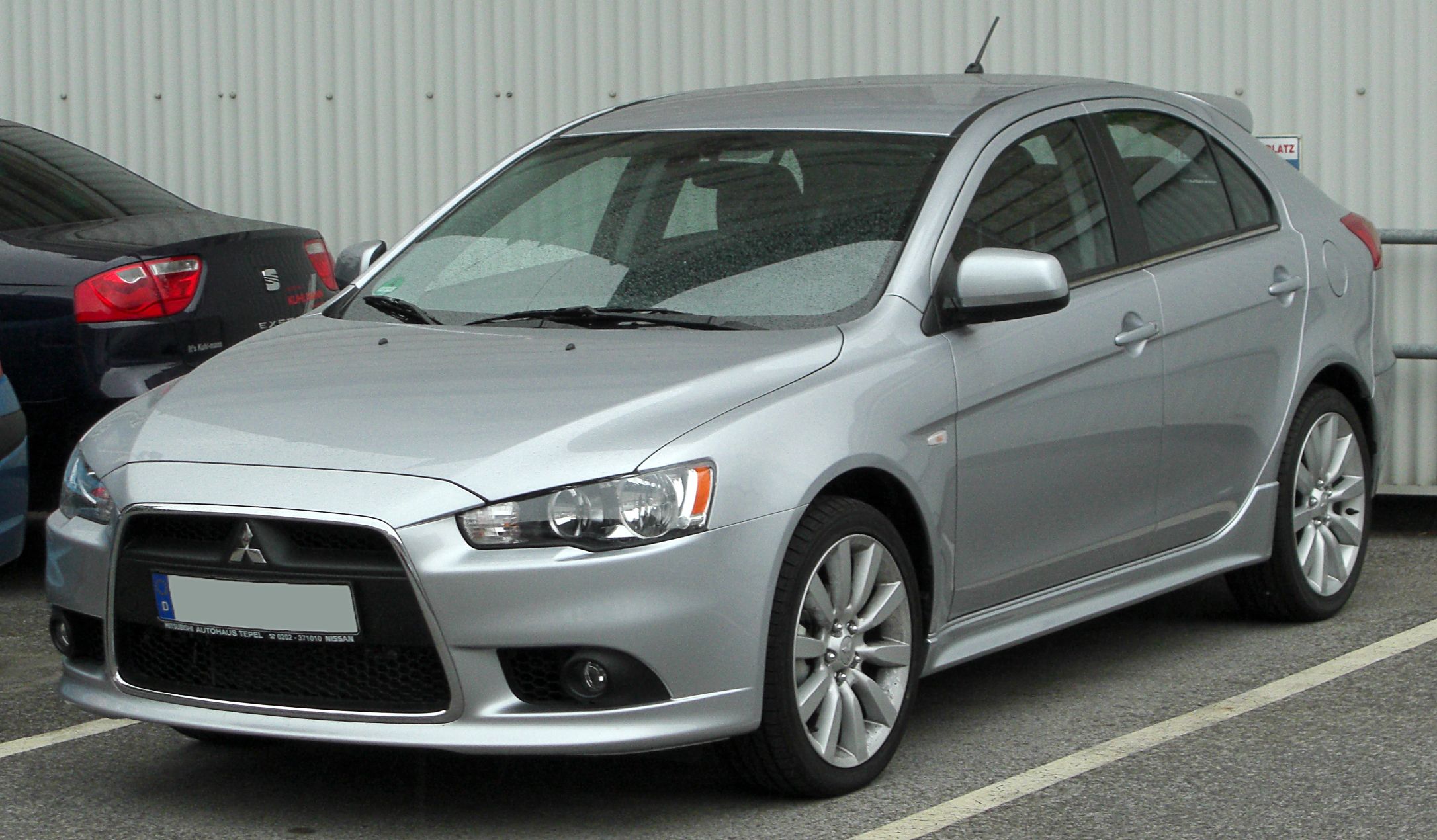
The Lancer SE and GT upgrade to a 2.4-liter four that makes 168 hp and 167 lb-ft of torque. The SE comes standard with a CVT and all-wheel drive. The GT has front-wheel drive and the five-speed manual standard, while its optional CVT features a Manual mode with simulated gear ratios operated via shift paddles on the steering wheel. In testing, a GT with a manual transmission accelerated from zero to 60 mph in 7.7 seconds, which is quick for this class. The 2.4-liter gets 23 city/30 highway and 26 combined with the automatic. The manual transmission delivers nearly identical fuel efficiency.
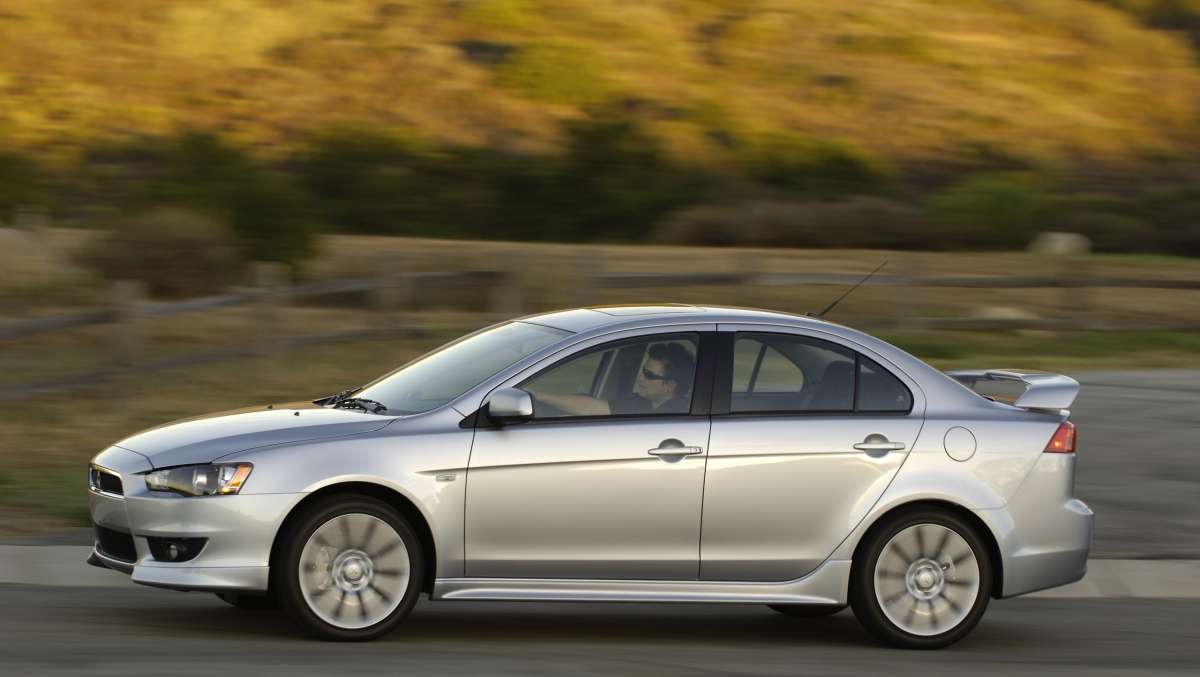
The Ralliart features a turbocharged 2.0-liter inline-4 that thumps out 237 hp and 253 lb-ft of torque. Power is sent to all four wheels through an automated dual-clutch manual transmission with shift paddles and an active center differential. The Ralliart dispatches the 0-60 dash in a sizzling 5.8 seconds but has notably poorer fuel efficiency, with ratings of 18/25/20.
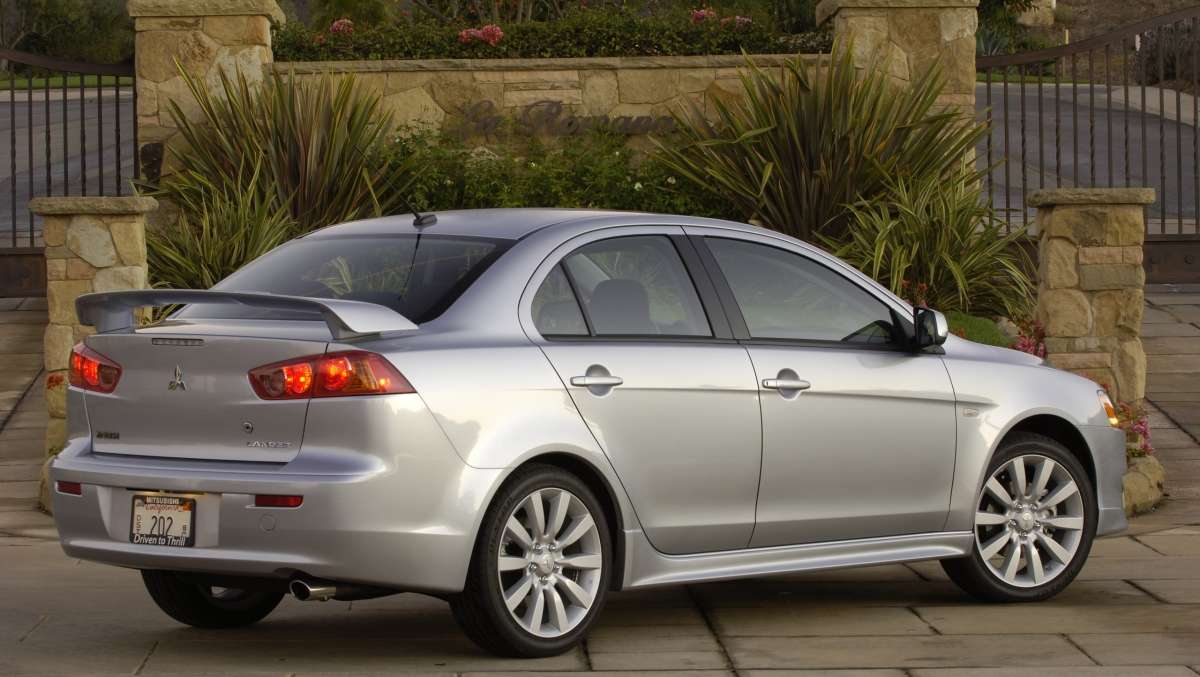
Standard safety features on all 2013 Mitsubishi Lancers include front-seat side airbags, full-length side curtain airbags and a driver knee airbag. Antilock brakes and stability control are standard across the board, but four-wheel disc brakes are standard only on the SE, GTS and Ralliart. The DE and ES trims get by with rear drum brakes. In brake testing, a Lancer GT stopped from 60 mph in an excellent 115 feet. Surprisingly, the Ralliart model with its summer high-performance tires delivered a disappointing stop of 126 feet.
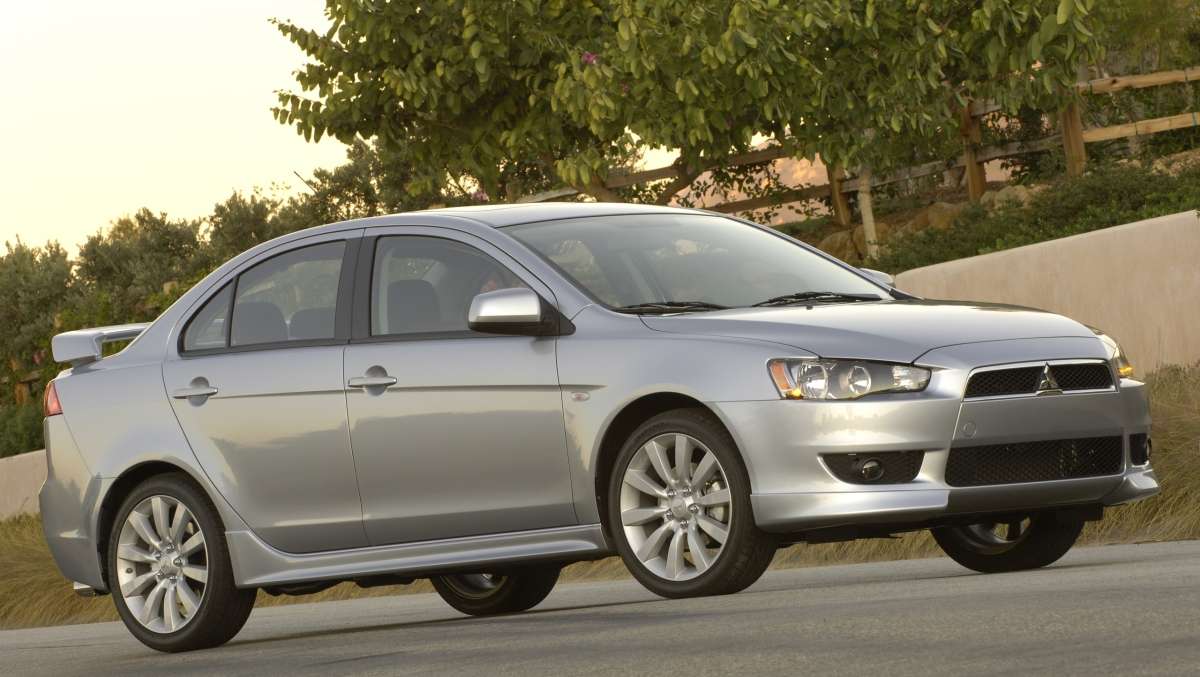
The Insurance Institute for Highway Safety awarded the Lancer a top score of "Good" in the organization's frontal-offset, side-impact and roof-strength tests.
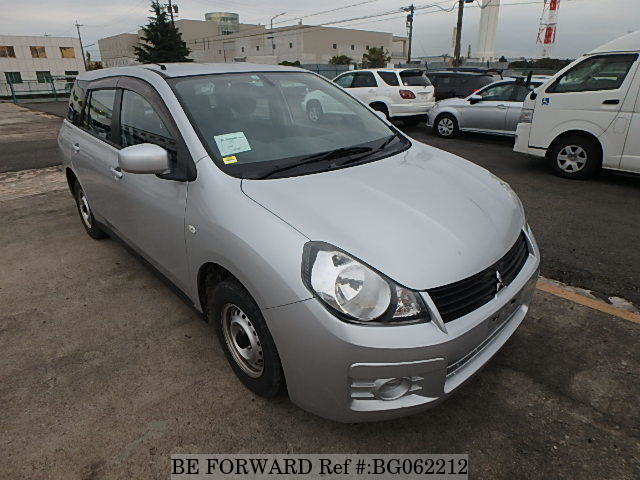
With a decent amount of comfort and a quiet cabin, a 2013 Mitsubishi Lancer equipped with the base 2.0-liter engine is powerful enough for the daily commute. Unfortunately, this engine seems to generate more noise than horsepower, especially when saddled with the CVT, a technology that makes performance seem lackluster even though it delivers good fuel economy. For those seeking a bit more excitement on a budget, the SE or GT are better alternatives thanks to more low-end engine power and a suspension that responds better to spirited driving.

The Lancer Ralliart represents a more affordable version of the high-performance Lancer Evolution model, and it delivers plenty of excitement thanks to turbocharged power, sharp handling and rapid-fire shifting from the dual-clutch automated manual transmission.

While the 2013 Mitsubishi Lancer's chiseled exterior lends an air of aggression, its interior design and materials drag down the car's overall appeal. On the whole, the cabin design is uninspiring and rife with hard plastic elements. The upper trim level's padded door inserts help, but the lingering downmarket feeling persists.
With horsepower ratings that range from 148 to 291, engine choice obviously has a huge impact on the Lancer driving experience. Still, the whole line shows an appreciation for response, balance and involving the driver. A mid-range GT model we tested impressed us with its composure on twisting mountain roads, and with its tenacious grip on the pavement. And a slightly smoother and quieter ES seemed very well suited to daily around-town driving chores, though it still talked to us about the road surface and what the tires were doing. These are all sporting automobiles. Some extremely so. In Evolution guise, the 2013 Mitsubishi Lancer is as stiff, loud, raucous and fast as some real race cars. It's loads of fun but not everyone's idea of everyday transportation. Be sure you know what you're getting into.
VOICE-ACTIVATED HDD NAVIGATIONThe Lancer's hard-drive-based navigation system responds more quickly than traditional DVD-based units. It also features Mitsubishi's new FUSE voice-recognition software for simple multimedia commands.6-SPEED AUTO-SHIFTING TRANSMISSIONIn Mitsubishi's parlance, it's a TC-SST, that alphabet soup standing for Twin-Clutch Sportronic Shift Transmission. To us it's just an excellent automatic (with manual-shift mode) that rifles through gears faster than we ever could.
The 2013 Mitsubishi Lancer's aggressive and modern exterior styling, sadly, does not extend into the cabin. The interior design looks a little stale and there's too much hard, cheap plastic. The steering wheel does not telescope and most of the seats have no height adjustability, so many drivers will have to adjust to the Lancer driving position rather than vice versa. The GT and Ralliart trims feature the most appealing interior, with a leather-wrapped steering wheel and shift knob and deeply bolstered front seats. The Sportback's flexible configuration delivers an impressive 52.7 cubic feet of cargo space.
The 2013 Mitsubishi Lancer separates itself from the mundane designs of traditional compact cars with its bold stance, aggressive snout and general attitude inspired by rally cars. Mitsubishi says the massive front grille suggests the air intakes found on high-tech fighter jets. The base DE model rolls on 16-inch steel wheels while the rest get alloys, 16-inch on ES and SE, 18-inch on GT, Ralliart and Evo. The Evo models have a gaping, black-mesh front grille, heat-extractor vents on the side, twin tailpipes in back and either a subtle rear spoiler (MR) or outrageous wing (GSR).
The base DE trim is pretty short on creature comforts so we'd start looking at the ES, which adds air conditioning, power door locks, steering-wheel-mounted controls, an auxiliary audio input jack and remote keyless entry. The SE model adds all-wheel drive, a more powerful 2.4-liter engine and heated seats. GT models have 18-inch alloy wheels, a sport-tuned suspension, automatic climate control, FUSE voice-recognition software with Bluetooth and sport seats. The Ralliart boasts a 237-horsepower turbocharged engine, AWD and a 6-speed twin-clutch Sportronic automatic transmission. The high-performance Evolution features a 291-horsepower turbocharged engine with AWD and large Brembo brakes.
Some of the Lancer's most desirable options are a 40GB hard-drive navigation system and the Deluxe Package that includes FAST Key keyless entry and start, Sirius/XM satellite radio (with three months of service), FUSE voice-recognition and a sunroof. An audio upgrade is available, an awesome 710-watt Rockford Fosgate system with a 10-inch trunk-mounted subwoofer and USB port. A Continuously Variable Transmission (CVT) serves as the automatic transmission option for the workaday Lancers (with paddle shifters in the GT), while the Ralliart and Evolution offer an excellent 6-speed twin-clutch Sportronic Shift automatic (TC-SST).
Mitsubishi unveiled the ninth generation Lancer at the 2007 Detroit Motor Show.
Part of the Mitsubishi business conglomerate, Mitsubishi Motors has earned its place on the Japanese and international car market. The company's history starts sometime in 1917, when the first Mitsubishi model, a seven-seater sedan based on the Fiat Tipo 3, rolls off the assembly line. Not very successful, production was discontinued after just 22 models were built.
True production begins after the merger of Mitsubishi Shipbuilding and Mitsubishi Aircraft Co. in 1934. Concentrated on building aircraft, ships, and railroad cars, the company found time to make a prototype sedan in 1937 which it called the PX33. Sadly, it was mainly for military use as the war approached.
Only after the war did the company really got into car production with a small three-vehicle vehicle, the Mizushima and a scooter with a funny name, the Silver Pigeon. Then came the split of the former conglomerate, because the conquering Allies did not see with favorable eyes Japan's industrial development.
A decade later, things in Japan were looking up and personal transportation became an issue again as more and more families afforded cars. Enter the Mitsubishi 500, a sedan for the masses, and later the Minica small car and the Colt 1000 in 1963. With sales rising, the remnants of the Mitsubishi conglomerate were united once again in 1970.
The next step for the company was to ally itself with a foreign company, Chrysler in this case, which bought 15% of the Mitsubishi, which afforded the Japanese manufacturer the license to sell rebadged Galants as Dodge Colts in the States and as Chrysler Scorpions in Australia.
In this way, Mitsubishi was able to raise numbers in production and set up a series of dealerships around Europe. But if for Mitsubishi things were looking up, the same could not be said about its American partner which was forced to sell the Australian manufacturing division in 1980.
Two years later, Mitsubishi would enter the American market under its own name with the Tredia sedan, the Cordia and the Starion coupe. The car quota was established at 30,000 vehicles but the Japanese were keen to increase that number and they began a campaign of active advertising. By the end of the 80s, Mitsubishi had achieved 1,5 million units produced worldwide.
In order to bypass the strict import regulations and to ease the tensions between the two companies, Mitsubishi and Chrysler founded a new vehicle manufacturing company in Normal, Illinois under the name Diamond-Star Motors which started production in 1987. The models that came out of this plant include the Mitsubishi Eagle, the Eagle Talon and the Plymouth Laser.
In 1988 the company changed its status from being privately owned to public. Mitsubishi industries remained the largest stockholder with 25% of the company, while Chrysler upped its share to 20 %. Later, in 1992, it reduced the equity to just 3% and even sold its interest in Diamond-Star Motors, leaving Mitsubishi as the sole owner.
In 1995, Mitsubishi Motors changed its name to the current on from DSM as it was previously known on the American market. Also, it opened up a new North American Manufacturing Division in 2002.
In 2000, Mitsubishi sought a new partnership with the newly formed Daimler-Chrysler concern which cost the German-American group $ 1.9 billion, $ 200 million less than the original price once the defect cover-up scandal came out. It seems that Mitsubishi had systematically covered up defects in its production cars as far back as 1977, involving anything from failing brakes to faulty clutch systems. When the news was disclosed, the company was forced to recall 163,707 vehicles for free repairs.
That, coupled with a economic crisis in the Asian region caused Mitsubishi a loss in profit and even the need to downsize in order to cope with falling demand. A new breed of cars, revitalized models and forward thinking was what brought Mitsubishi back on track. The Mitsubishi i, a small car perfect for the Asian market and the new Lancer and Outlander were enough to put the company back on the market. This lead to the first profitable quarter at Mitsubishi in four year to be declared in 2006.
2013 Mitsubishi Lancer Evolution Mr 0 60
Source: https://www.mycarspecs.com/car/2013-mitsubishi-lancer-evolution-gsr

0 Komentar